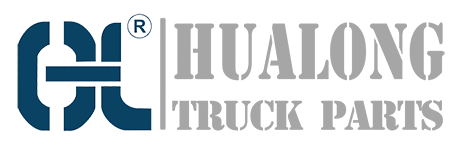Introduction
A hydraulic lift table is a piece of equipment that is used to lift and lower heavy objects. It uses hydraulic cylinders and fluid pressure to lift the object, making it easier and safer to move large and heavy items. In this article, we will discuss how a hydraulic lift table works and its different components.
The Components of a Hydraulic Lift Table
Before we dive into the workings of a hydraulic lift table, let’s first take a look at its different components. A standard hydraulic lift table consists of a base, hydraulic cylinders, a platform, and control valves. The base serves as a stable foundation for the table, while the hydraulic cylinders are responsible for raising and lowering the platform. The platform is the area where the object rests, and the control valves are used to regulate the flow of hydraulic fluid.
How Does the Hydraulic System Work?
The hydraulic system that powers the lift table is made up of several key components. It includes a reservoir, a pump, a pressure relief valve, a directional control valve, and hydraulic cylinders. Hydraulic fluid is stored in the reservoir, and the pump pressurizes and circulates this fluid. The pressure relief valve regulates the pressure of the fluid, while the directional control valve controls the flow of fluid to the hydraulic cylinders. When the directional control valve is opened, the fluid flows to the cylinders, causing the platform to rise. Closing the valve causes the fluid to return to the reservoir, lowering the platform.
The Role of Hydraulic Cylinders
Hydraulic cylinders are the most critical component of a hydraulic lift table. They consist of a hollow cylinder, a piston, and a seal. When fluid is pumped into the cylinder, it causes the piston to move, which in turn raises the platform. Because hydraulic cylinders are designed to handle a large amount of weight, they are often made from hardened steel and are incredibly durable.
Controlling the Flow of Fluid
Control valves are used to regulate the flow of hydraulic fluid in a lift table. They are typically operated using hydraulic levers or buttons. By moving the levers or pressing the buttons, the operator can open and close the valves, causing the platform to rise or lower. Some modern hydraulic lift tables also include electronic control panels that make it easier to operate the table and regulate its movement.
The Importance of Safety Features
Hydraulic lift tables are designed to move heavy objects, which can pose a safety risk if not operated correctly. To minimize this risk, most modern lift tables include safety features such as overload protection, emergency stops, and safety rails. Additionally, operators should receive proper training and follow the manufacturer’s guidelines for operation and maintenance.
Maintenance Requirements
To extend the life of a hydraulic lift table, it is essential to perform regular maintenance. This includes checking and replacing the hydraulic fluid, inspecting the components for wear and tear, and lubricating any moving parts. Operating the lift table within its weight limit and not pushing it beyond its capabilities also helps to prolong its lifespan.
The Advantages of a Hydraulic Lift Table
A hydraulic lift table offers several benefits over other types of lifting equipment. It can lift heavy objects with ease and precision, making it ideal for industrial and commercial applications. Hydraulic lift tables are also highly customizable, allowing them to be tailored to meet the specific needs of the operator. They provide a safer and more efficient alternative to manual lifting, reducing the risk of injury or damage to the object being lifted.
The Limitations of a Hydraulic Lift Table
While hydraulic lift tables offer many advantages, they do have some limitations. They are often more expensive than other types of lifting equipment, and their hydraulic components require regular maintenance. Additionally, lift tables are limited in their ability to maneuver or transport objects, and they may not be suitable for all types of loads.
Final Thoughts
In conclusion, a hydraulic lift table is a powerful and versatile piece of equipment that uses hydraulic cylinders to lift and lower heavy objects. They offer many benefits over other types of lifting equipment, including greater precision and efficiency. However, they also require proper maintenance and may not be suitable for all applications.

